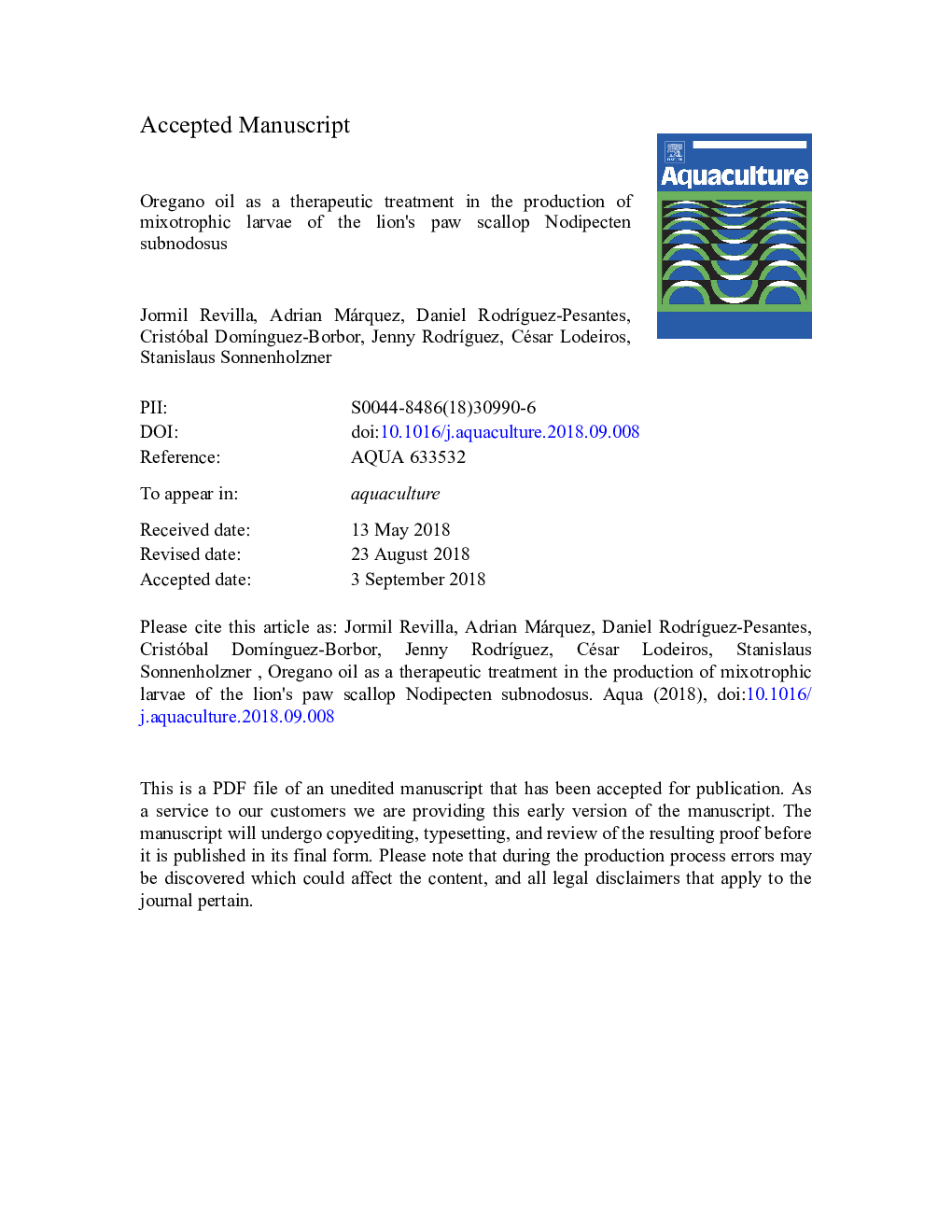| Article ID | Journal | Published Year | Pages | File Type |
|---|---|---|---|---|
| 11031919 | Aquaculture | 2019 | 31 Pages |
Abstract
Antibiotics have been used massively for aquatic organism production. However, their use should be limited given the problems of increased antibiotic resistance, and new alternatives should be attempted, such as the use of plants extracts with antibacterial properties. The effect of the essential oil of oregano (Origanum vulgare) compared with three antibiotics (enrofloxacin, florfenicol, and oxytetracycline) on embryogenesis and early larval stages were evaluated to obtain mixotrophic larvae of the scallop Nodipecten subnudosus. Incubation densities of 20 and 100 fertilized oocytes mLâ1 were used. The highest yield of normal larvae (calcified D-larvae) occurred at high densities in an order of 300% (36-45 D-larvae mLâ1), with the highest values being obtained when the fertilized oocytes were treated with the oregano essential oil and with the antibiotic florfenicol, 44.8â¯Â±â¯5.16 and 40.9â¯Â±â¯12.06 D-larvae mLâ1, respectively. Nevertheless, the use of florfenicol produced larvae with shorter anteroposterior length, which strengthens the advantage of using oregano essential oil over the antibiotics for spat production of N. subnudosus.
Related Topics
Life Sciences
Agricultural and Biological Sciences
Aquatic Science
Authors
Jormil Revilla, Adrian Márquez, Daniel RodrÃguez-Pesantes, Cristóbal DomÃnguez-Borbor, Jenny RodrÃguez, César Lodeiros, Stanislaus Sonnenholzner,
